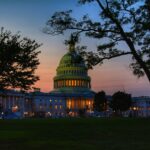Election Month in Ohio
As the coronavirus pandemic has swept across the country, sporting events, concerts, festivals, and most alarmingly, elections have been postponed. Sixteen states and one territory have either delayed their presidential primaries or made the switch from in-person to mail-in-elections. Ohio was one of the first states to do so, albeit with its share of confusion and a false start — or, in this case, a false delay.
On the eve of Ohio’s scheduled March 17 primary, Governor Mike DeWine announced that he had filed a lawsuit to move Ohio’s primary election day to June 2 (Ohio law does not permit the governor to delay an election, except in the case of an invasion). However, the judge denied the request, effectively putting the election back on hours before the polls were scheduled to open. Shortly after the ruling, DeWine announced that the state’s public health director was ordering polls be closed to prevent the spread of the virus, definitively shuttering in-person polling places and postponing the state’s presidential primary.
Given that election dates are set in Ohio Revised Code, the legislature contended they or the courts were the only authority able to set a new voting date, not the governor. So, eight days later, amidst the ongoing COVID-19 pandemic, legislators reconvened and passed bipartisan coronavirus response legislation, establishing a mail-in-election that extends Ohio’s presidential primary to April 28. The law does not permit general in-person voting (except for the disabled and homeless) and does not provide postage for ballot applications, the absence of which has led some to believe illegally requires Ohioans to pay to vote.
Registered voters must now request an absentee ballot by mailing in a hand-written request with the required information or printing, filling out, and returning a ballot request form to their local board of elections or calling their local board of elections to have the request form sent to them. Then, election officials will send out the requested ballot to be filled out and mailed back by the voter.
Many have pointed out that obtaining the absentee request form and mailing back the absentee ballot could be a challenge to some voters, however here in Columbus, people have come up with clever ways to lend a helping hand. Grassroots efforts have mobilized to get request forms to potential voters. From individuals leaving stacks of ballot request forms on their front porches and food banks including forms with food donations, to candidate campaigns and membership groups shipping them out to supporters, people are finding ways to help ensure every voter can participate in Ohio’s primary. The Franklin County Board of Elections, Columbus’ local board of elections, supplied 18,500 applications to dozens of area Kroger grocery stores, making printed requests available in one of the few places left open to the public.
Now, just days out from the end of Ohio’s primary election month, almost 1.7 million Ohioans have requested an absentee ballot by mail — a substantial figure — but overall voter turnout is expected to fall very short of a “normal” presidential primary year. For comparison, 3.3 million Ohioans voted in the 2016 presidential primary.
The effects of the COVID-19 pandemic on the state’s 2020 primary have been numerous and far-reaching. Multiple lawsuits have been filed over the postponement, extension, and the details of Ohio’s now mail-in only presidential primary, and criticisms of when and how it was delayed continue to be raised and debated. County boards of elections across the state are frantically working to receive, mail, and process each absentee ballot, and many have requested help from the secretary of state’s office. Not to mention the effect on Ohio’s Democratic Party voters, who are lamenting their vote’s decreased impact on the party’s presidential race.
And we thought 2020 presidential primaries couldn’t get more dramatic than Iowa’s.




